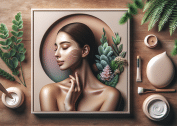When ideas stay in our head, they often remain fuzzy. But when we sketch, journal, or build physical models, tangible mediums ground abstract thought, giving structure to mental complexity. In 2025, as AI-generated content proliferates and our digital attention fragments, physical tools—traditional sketching, analog journals, and tangible user interfaces—are making a comeback. They offer clarity, memory retention, and creative insight hard to match digitally.
This trend isn’t nostalgic. It’s backed by recent research and emerging practices that highlight how touching, drawing, and interacting with physical media can shape better thinking. In this article, we’ll explore why tangible media ground abstract thought, what’s changing in this space, and how to integrate tangible practices into your workflow.

Why Tangible Mediums Ground Abstract Thought
Cognitive Benefits of Hand drawing and Writing
Recent studies show a strong link between physical drawing and memory improvement. Researchers found that drawing words boosts brain activation in sensory integration and imagery areas, enhancing recall.
Similarly, writing or sketching ideas on paper offloads working memory, making complex thoughts easier to manage and manipulate.
Physical Interfaces as Cognitive Tools
Tangible user interfaces (TUIs) allow users to manipulate physical objects to manage digital information. Pioneered at MIT Media Lab, TUIs emphasize graspable interaction, engaging multiple senses to structure abstract data in real space.
Physical models or interactive tangible systems offer a cognitive anchor—our brains connect abstract systems to physical form.
Mental Health & Flow Through Creative Grounding
Mindful sketching or journaling provides emotional regulation and stress reduction, supporting mental wellness alongside conceptual clarity. Such grounded practices encourage flow—focused, immersive states where abstract thought becomes vivid.
Emerging Trends That Highlight Tangible Grounding
Analog First Journaling & Bullet Journals
The resurgence of analog journaling systems—like bullet journals—reflects a desire for tactile reflection. Research on paper-based self‑tracking shows that people adapt and extend analog formats to support emotional and practical needs better than rigid digital trackers.
Augmented Reality Meets Physical Sketching
“Sketched Reality” is an emerging method combining AR sketching and actuated TUIs, allowing virtual lines to control physical robots and models—creating bidirectional connections between abstract sketches and tangible form.
This marriage makes abstract ideas physically present and manipulable.
Data Physicalization in Learning Environments
A study comparing large physical models versus digital visualizations found that physicalization significantly improved comprehension and long-term memory retention among participants. When learners can walk around data sculptures or interact directly with physical representations, abstract patterns become more intuitive.
How to Use Tangible Mediums to Ground Abstract Thought
1. Start with Simple Hand Sketching
- Use pen and paper to visualize concepts, flows, or relationships.
- Sketching helps structure abstract ideas before committing to linear formats.
2. Keep a Physical Journal
- Record thoughts, outline ideas, and reflect in analog form.
- Switch between drawing and writing to engage different cognitive channels.
3. Use Physical Prototypes and Models
- For workflows, storyboards, or product ideas, build tactile prototypes.
- Tools like LEGO, foam core, or cardboard help externalize abstract systems.
4. Experiment with Hybrid Tools
- Try enhanced digital pens (e.g. Livescribe, Apple Pencil) or AR sketch apps.
- Engage with systems that connect physical drawing to digital outcomes—this supports transition from analog to digital knowledge without losing grounding.
5. Join Communities That Share Process
- Platforms for sharing in-progress sketches, notebooks, or models create feedback loops and encourage early iteration.
- Peer reflection strengthens clarity and idea evolution.
Benefits of This Approach
- Improved memory and understanding: Physical drawing links sensory input to mental representations, improving retention.
- Better mental structure: Tangible media force ideas into visual-spatial form, clarifying complex relationships.
- Enhanced creativity: Physical manipulation invites serendipity and unexpected insight.
- Emotional grounding: Analog practices reduce cognitive overload and support mindful focus.
Who’s Leading the Trend?
- Educators are incorporating sketch-based learning and physical models into STEM curriculum.
- Designers use both analog sketch research and TUIs to plan spatial experiences.
- Knowledge workers use hybrid setups—journals, sketchbooks, and AR tools—for ideation and planning.
- Therapists and coaches use drawing exercises to help clients connect abstract feelings to images.
When Tangible Mediums Ground Abstract Thought Is Most Effective
This approach works best when:
- You’re initiating a project and need clarity on structure or flow.
- You’re struggling to retain or integrate abstract concepts.
- You need to collaborate and spatially present ideas.
- You seek to manage cognitive load or process emotions.
Practical Guide to Implementing Tangible Grounding
- Choose your medium: pen and paper, sketchbook, building materials, or digital hybrid tools.
- Allocate dedicated time for sketching, journaling, or prototyping.
- Combine text and visuals—use arrows, diagrams, annotations.
- Review and iterate: revisit tangible media, refine, or re-sketch.
- Blend digital and physical: photograph or digitize work to archive or share.
- Reflect after a period—notice how concrete grounding shifted your thought.
Conclusion
In a world of fast swipes, ephemeral content, and digital overload, the permanence and physicality of tangible mediums offer more than just nostalgia—they offer cognitive grounding. Whether it’s jotting thoughts in a notebook, sketching on a whiteboard, or manipulating physical objects during ideation, these analog tools help stabilize complex, abstract thinking in ways that digital interfaces still struggle to replicate.
Emerging research supports what creators, designers, educators, and strategists have long intuited: the mind often thinks better when the hands are involved. Tangible mediums serve as thinking scaffolds, anchoring slippery ideas and encouraging a depth of reflection that screen-based tools can fragment. This doesn’t mean discarding digital tools—but it does mean using analog methods intentionally, as complements rather than competitors.
As we navigate increasingly complex problems—from system design to personal meaning-making—the tools we choose to think with shape the solutions we discover. And sometimes, the smartest move is to step away from the screen and let our minds follow our hands.
References
- Brady, Meade & Fernandes (2024). Drawing boosts memory by enhancing sensory integration and imagery. https://link.springer.com/article/10.3758/s13421-024-01618-4?utm_source=chatgpt.com
- Thurlow et al. (2018). Sketching supports design cognition through memory and working-memory offloading. ResearchGate https://www.researchgate.net/publication/366720036_Relaxing_Design_Students%27_Sketch_Inhibition_Experiences_with_Theoretical_Grounding_and_Impermanent_Media?utm_source=chatgpt.com
- Shaer & Hornecker (2010). Survey of tangible user interfaces linking physical and digital cognition. Foundations and Trends in HCI https://strathprints.strath.ac.uk/32851/1/TUISurveyFnTHCI2010.pdf?utm_source=chatgpt.com









